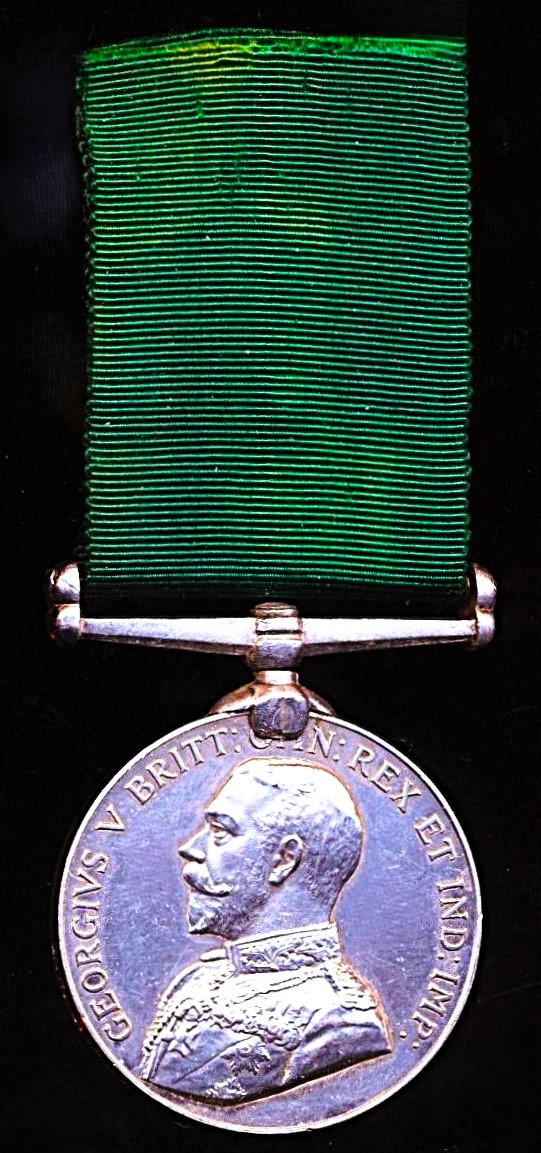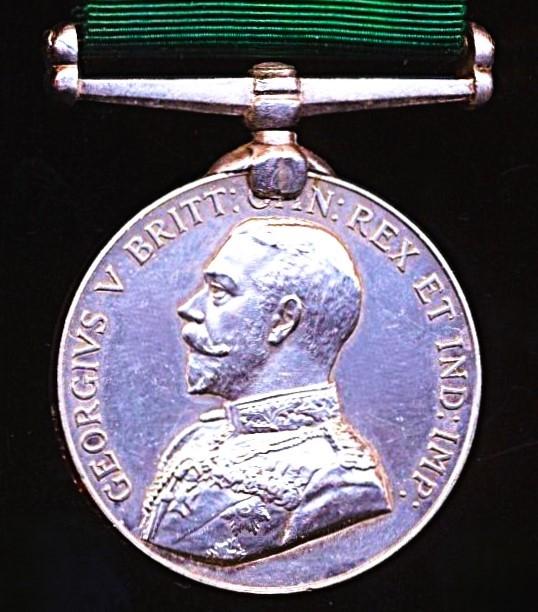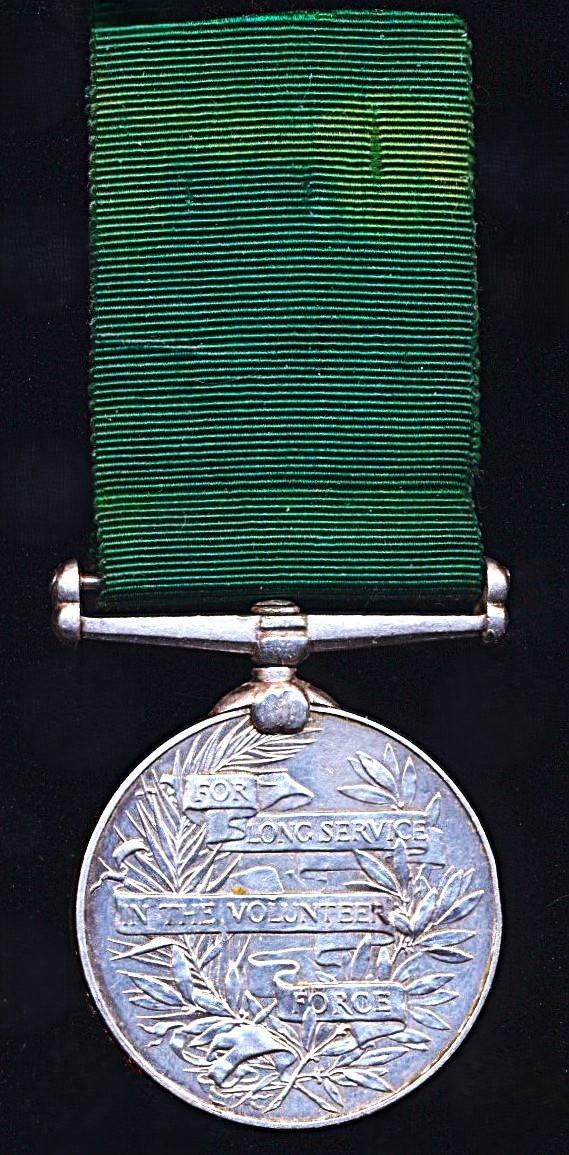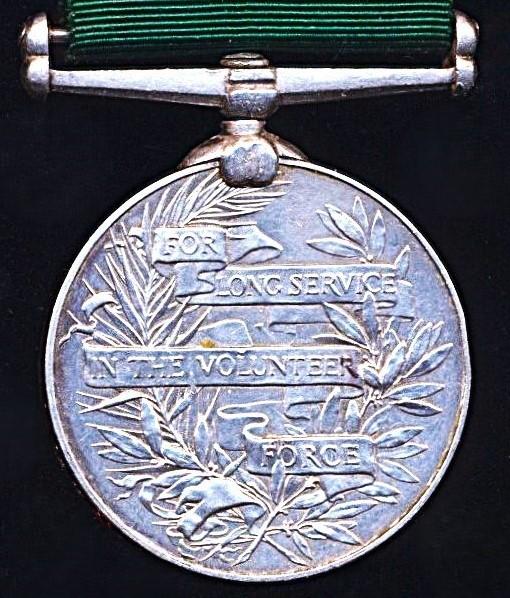Volunteer Long Service Medal (India & the Colonies). GV issue (Gnr. J. Philip, IV Bde., R.A., A.F.I.)
Medal verification: Gunner Philip, 4th (Cossipore) Brigade, Royal Field Artillery, A.F.I., the medal published in Indian Army Order 272 of 1927, with award date of, 21 April 1927
Medals issued: Reference 'The Auxiliary Force India and its Predecessors...' (Harfield, 2015) an estimated total of only 28 x VLSM's were awarded named to the unit under its designation IV (Cossipore) Brigade, Royal Artillery, AFI., & IV (Cossipore) Field Brigade, Royal Artillery, AFI
Raised in 1884, the Cossipore Artillery Volunteers, was a Calcutta based volunteer artillery unit. The unit had its origins dating back to 1888, when the regiment was raised. Volunteers from the Cossipore Artillery Volunteers served with the Calcutta Volunteer Battery in East Africa during he Great War. Like several other Calcutta based volunteer units, the Cossipore Artillery Volunteers included large numbers of Scottish expatriates - in particular from the Scottish city of Dundee - many of which were employed in the Jute Mills and Jute Trade centred on Calcutta, but controlled by Scottish capital. So many Scots served in the regiment, that it boasted its own regimental kilted Pipe Band. In 1922, the unit was re-styled as IV (Cossipore) Brigade, RA, AFI. The regiment was eventually amalgamated to form the Bengal Artillery (Auxiliary Force India), that was stood down on 14 August 1947. Another key source of volunteers for the Cossipore Volunteer Artillery, was the pool of skilled European and Eurasian technicians and, who worked at the numerous Ordnance depots located at Cossipore and adjacent Dum Dum Cantonment
James Philip, son of James Philip (a Soldier serving as Private in Royal Highlanders (deceased by 1911) as recorded in James's Wedding Record of 1911) and Leah Philip was a native of, Alyth, Forfarshire, Scotland, where he was born circa 1882. On 7 August 1901, James was residing with his mother at 233 Hilltown, Dundee, Scotland, when he enlisted in the Militia, his extant service papers show that he was already member of the 1st Forfar Volunteer Artillery, and was at the time employed with Thomas Brothers of Dundee, where he worked a 'Mill Worker'. His Militia papers show that after service with the Forfar and Kincardine Royal Garrison Artillery (Militia) he then transferred to the Royal Scots Fusiliers on 8 December 1902. After taking his discharge form the British Army, James returned to Dundee, where on, 17 October 1911, and now described as a 'Powerloom Tenter', he married Georgina Todd C Keir (described as a 28 year old Clerkess). Shortly after his wedding, James accepted an appointment to work overseas in British India, as an 'Overseer' in a Scottish owned Jute Mill, located near Calcutta, Bengal. In 1917, the Dundee People's Journal issue of 17 October 1917, contained a 'Cable' announcement, announcing the birth of a daughter, at Calcutta, to Mr. and Mrs. James Philip, Kanknarrah Jute Mills. The daughter was Jemima Simpson Philip, who was born on 14 October 1917, and baptised at Barrackpore, Bengal, on, 9 December 1917, the baptism being performed by Matthew Biggar described as 'Mills Minister'. In 1917, James is recorded as a 'Mill Assistant'.
A medal to a scarce seen - and desirable - volunteer unit, the 'Cossipore's'
Condition: GVF
Code: 24475
165.00 GBP







